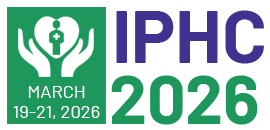Title : Obesity prevalence by using six indices and their associations with hypertension, diabetes mellitus, and hypercholesterolemia in Russian adult population
Abstract:
Background: Obesity is a reversible predisposing factor for cardiovascular diseases. Amongst the various anthropometric indices, the best one to help predict cardiometabolic risk factors remains inconclusive. We therefore assessed the prevalence of obesity with six indices and compared their associations with obesity-related cardiometabolic disorders in the Russian adult population.
Methods: We analyzed data from the population-based cross-sectional Know Your Heart Study (n=4495, 35-69 years, 58,1% women). Age-standardized prevalence of obesity according to body mass index, waist circumference, waist-to-hip ratio (WHR), waist-to-height ratio (WHtR), body fat percentage and fat mass index (FMI) was determined in men and women. The areas under the receiver operating characteristic curves (AUCs) were used to compare the predictive value of these indices for the presence of hypertension, hypercholesterolemia, diabetes and a combination of at least two disorders. Age-adjusted prevalence ratios (PRs) of cardiometabolic factors were calculated in the presence vs absence of obesity.
Results: The age-standardized prevalence of obesity significantly varied according to anthropometric index used; among men, from 17.2% (FMI) to 75.8% (WHtR); among women, from 23.6% (FMI) to 65.0% (WHtR). Among the six indices, WHtR had the strongest association with hypertension (AUC = 0.784; p< 0.001) as well as a combination of disorders (AUC = 0.779; p< 0.001) in women. The AUCs of WHtR were the largest compared to other indices for hypercholesterolemia in women and for hypertension, diabetes and a combination of disorders in men, although the confidence intervals of WHtR and other indices were overlapping. In both sexes, obesity defined according to all indices had closer associations with diabetes, than with hypertension and hypercholesterolemia. Obesity according to WHtR had significantly closer association with hypertension (PR 2.16) and a combination of disorders (PR 2.24) compared to other indices, but only in women.
Conclusion: The obesity prevalence was 17.2-75.8% in men and 23.6-65.0% in women according to FMI and WHtR, respectively. In our study, WHtR has the best predictive value for obesity. WHtR exhibited the closest association with hypertension and a combination of cardiometabolic disorders in women and was non-inferior compared to other indices in men.
Audience Take Away Notes:
- The audience will learn different obesity indexes, comparison of obesity prevalence using different indices and their associations with non-obesity components of metabolic syndrome (hypertension, diabetes mellitus, and hypercholesterolemia)
- Our data provide the new evidence in selecting the best index to define obesity and its relationships with non-obesity components of the metabolic syndrome. This information can be used to in the routine practice of examination of people with obesity and prevention of obesity-related consequences



